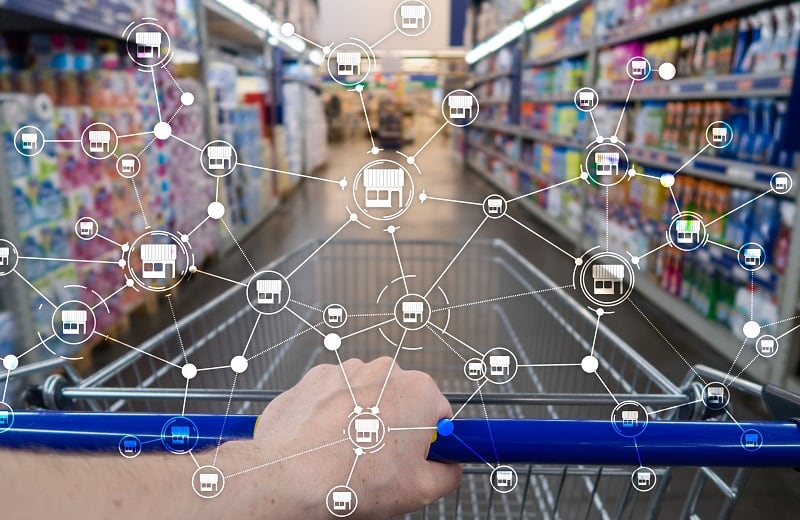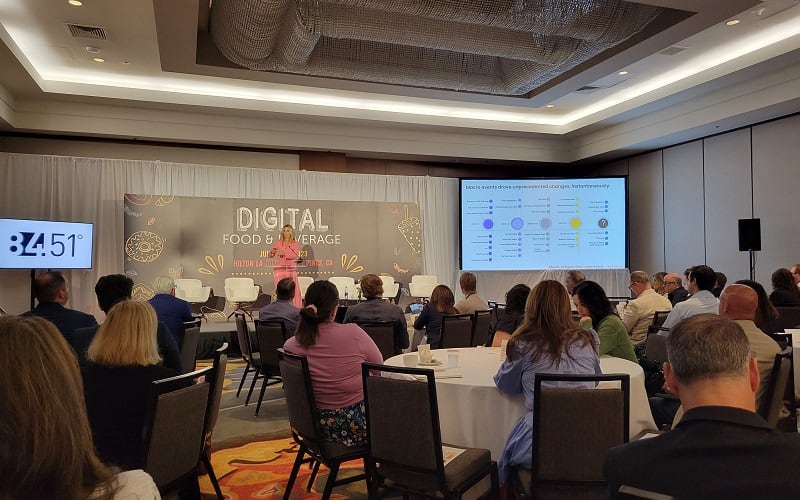“The reality is that the consumer has gone omni; they've been omni for quite some time, accelerated certainly during COVID. Eighty-three percent of consumers today are omnichannel shoppers, and those shoppers are also much more valuable to our organizations as well as our retailer partners, two to four times more valuable depending on which retailers we're talking about as omni channel engagement drives loyalty, repeat and a number of other factors,” Anne Zybowski, VP of e-commerce, digital shelf at Circana.
Understanding the link between digital, in-store purchases
CPG brands have several options to drive sales from raising prices to increasing the frequency of purchases, Zybowski explained. However, growing a brand through attracting new customers to a product (i.e., increasing brand penetration) is particularly difficult in this environment, she said.
“As we take a look at the levers of growth and the amount of growth in the marketplace holistically that is driven by price versus new buyers and frequency across total trips, we see huge sensitivity to price across the board.”
And while consumers are heading back into brick-and-mortar retailers to save money, a strong percentage of them “do their research first online at home before they go in,” which is why brands need to focus on both to grow brand penetration, said Andrew Pearl VP of Industry Insights at Profitero. "When they are in-store, ... about three and 10 of [consumers] are also checking retailer websites or apps during that in-store visit, now that's for things like pricing, reviews, and product content," he added.
And though e-commerce is a major driver of in-store purchases, many organizations still lead with the brick-and-mortar side of the business and don’t work in an integrated fashion between traditional retail and e-commerce, Zybowski said.
“The challenge we've had as we take a look at the reality that the omnichannel consumer has gone omni is that many of our organizations still go to market as bricks and mortar," Zybowski said. "We've talked about how many leading CPGs are trying to move back towards integration of those functions, but ... the integration and the change management of that remains a challenge.”
Going beyond one-size-fits-all to provide
When it comes to actually attracting new customers, brands have a host of levers that they can pull to increase brand penetration, shared Chris Perry, chief learning officer and co-founder at firstmovr.
“If I'm trying to keep my current brand buyers, besides having a great product that they already buy, I could potentially use my assortment to be relevant in new locations that could buy another trip by all means, but it might also be the alternative trip. What if they were going to defect from my brand, but we made ourselves relevant with a limited edition or a holiday seasonal pack ... or some sort of other special occasion or again.”
In addition to becoming relevant to consumers who might have left, brands can look at how they are using digital advertising to attract new customers and actively use another brand’s search to promote their own product in an effort to persuade consumers from one brand to another, Perry said. Blue Buffalo dog food ran a banner ad with the test "Why Choose Blue Life Protection" on the search result page for its competitor Hills Science Diet, he added.
The out-of-stock impact
And whatever a brand might do to attract a consumer to their brand, they also need to be careful about something more essential to their business: whether they’re in stock or not. Products that are out of stock on a retailer’s digital site can have a negative impact not only on sales but the product’s placement in search, Zybowski explained.
“Being unavailable also does have an impact on retailers, algorithms, and the placement on the shelf, and that being out of stock for over two days often results in a six-tile drop in your organic share on the page and then the longer that you're out of stock and not purchased. And that volume has an impact overall on visibility and visibility in addition to availability then has a snowball effect overall.”




